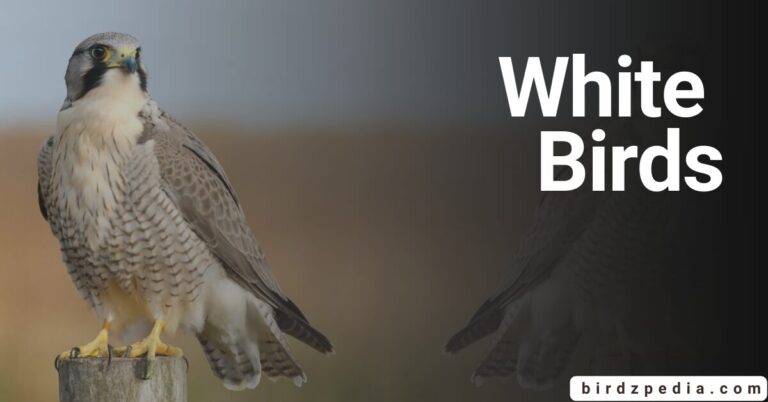Pelagic cormorant: [Urile pelagicus] Odyssey Habitat, and Overview
Scientific Classification
| Kingdom | Phylum | Subphylum | Class | Subclass | Infraclass | Superorder | Order | Family | Genus | Species |
|---|---|---|---|---|---|---|---|---|---|---|
| Animalia | Chordata | Vertebrata | Aves | Neornithes | Neognathae | Neoaves | Suliformes | Phalacrocoracidae | Phalacrocorax | pelagicus |
Pelagic cormorant
The Phalacrocoracidae family of cormorants includes the compact Pelagic Cormorant (Urile pelagicus), also referred to as Baird’s cormorant or violet-green cormorant. Similar to other smaller cormorants, it is also known as the pelagic shag on occasion. This seabird spends the winter months in the open ocean
and along the coasts of the northern Pacific. Among all birds, Pelagic Cormorants have the highest flight costs due to their comparatively narrow wings, which is a distinguishing adaption for effective mobility underwater. A 2014 research recommended moving this species,
along with a few other Pacific cormorants, from the genus Phalacrocorax to the genus Urile. The IOC subsequently approved this taxonomic modification in 2021.

Summary
- Name: Urile pelagicus, also known as Baird’s cormorant or violet-green cormorant.
- Family: Phalacrocoracidae.
- Habitat: Northern Pacific coastal regions; sometimes found in the open ocean in the winter.
- Flight Adaptation: has comparatively short wings that are designed to allow for effective underwater mobility..
- Flight Costs: holds the record for the most expensive flight of any bird.
- Range: The northern Pacific shores are where the bird is mainly found.
- Ecology and Biology:
- Diet: The Pelagic Cormorant is a fish-eating bird that dives underwater to capture its meal..
- Breeding: Nesting atop rocky cliffs is one of their breeding practices.
- Status: The state of conservation at the moment may differ, and precise knowledge requires certain details.
- Taxonomy and Systematics:
- Genus Reclassification: Originally assigned to the Phalacrocorax genus.
- Taxonomic Adoption: The reclassification was adopted by the International Ornithological Congress (IOC) in 2021.
Description
Here’s the provided information presented in a table format:
| Characteristic | Description |
|---|---|
| Size | 25 to 35 in (64 to 89 cm) in length |
| Wingspan | About 3.3 ft (1.0 m) |
| Weight | 52–86 oz (1,500–2,400 g) when fully grown |
| Plumage (Nonbreeding) | All-black with a metallic iridescence |
| Plumage (Breeding) | Two short crests (one on top of the head and one at the nape), white thighs, and scattered white filoplumes on the head and neck. |
| Bill and Feet | Long thin bill and large feet with all-webbed toes, black throughout the year. Patch of dark naked skin below the eye turns vivid magenta in the breeding season. |
| Sexual Dimorphism | Males and females do not differ significantly in appearance; females are slightly smaller. |
| Immature Birds | Lack iridescence and are dark brown, grading into slightly lighter brown on the underside. |
| Comparison with Red-faced Cormorant (U. urile) | Breeding adults: Facial skin in U. pelagicus does not extend noticeably beyond the eye, while U. urile has skin extending above the bill and above and behind the eye. U. urile also has larger crests. Juveniles and nonbreeding adults: Often indistinguishable, especially in mixed flocks. Courtship behavior: U. pelagicus tears and moves nest material; males do not bow their heads before females. |
| Vocalization and Behavior | Usually calls out before taking off, particularly during the breeding season. |
| Courtship Display | In courtship display, nest material is torn and moved about; males do not bow their heads before females, unlike U. urile. |
| Comparison with Other Cormorants and Shags | Unlike other North Pacific cormorants and shags, Urile pelagicus are smaller, have a thinner bill, and possess white thighs in breeding plumage. |

Range
The North Pacific’s beaches and neritic zone are home to the Urile pelagicus. Its distribution in North America extends from Alaska to the Mexican Baja California Peninsula. Along with the Aleutian and other Bering Strait islands,
the bird’s range extends from the Chukchi Peninsula in the Russian Far East, acrossSakhalin, south to Kamchatka, and finally to Kyūshū, omitting the remainder of Japan. While populations from temperate and subtropical regions disperse locally after breeding,
populations from subarctic regions migrate. Birds from Asia may fly as far as China or Korea. There are records of this species’ vagrants in the Hawaiian Islands.
Behaviour
Diet
When they are on land, they have a rather awkward gait, which is typical of Sulae waddling (darters not included). They often scratch the ground after landing, which is a normal activity for cormorants. These birds make protective movements, tossing their heads, flicking their bills at
trespassers, and gargling when they feel threatened. They use their feet for propulsion and their wings for steering when they swim to find prey, dive under, and pursue it. They may dive down to 140 feet (43 meters), where they eat on or close to the seafloor.
Hunting places of preference include wide sea areas and protected inlets and bays, especially during the non-breeding season. they exhibit a predilection for hunting in or close to kelp beds. Small, non-schooling bottom-dwelling fish like Ammodytes sand eels, sculpins (Cottidae), gunnels
(Pholidae), and Sebastes (rockfish) are usual prey for them. They also usually include tiny crustaceans, especially shrimp, in their diet. They have been seen joining feeding flocks of mixed species that are chasing schools of juvenile Pacific herrings (Clupea pallasii).
Due to a vestige uropygial gland, their plumage lacks waterproofing, just like that of all cormorants. As a result, after feeding, the birds stretch their wings and head back to a safe spot to preen and dry their feathers.

Breeding
- Breeding Habitat:
- Urile pelagicus breed on rocky shores and islands.
- They do not form large colonies but may nest in smaller groups.
- Nesting Behavior:
- Nesting sites are on cliff faces, often on ledges, occasionally in crevices or caves.
- Nests are constructed from stringy plants like grasses or seaweed, held together by the birds’ guano.
- Once a suitable nest site is found, the birds tend to remain faithful to it for their lifetime.
- Nests are repaired and improved each season and can grow up to 5 ft (1.5 m) deep.
- Courtship Display:
- Males engage in an elaborate courtship display, involving stretching the gular sac, repeated “yawning,” arching the neck, hopping, lifting folded wings, and rapidly fluttering them to reveal white thigh patches.
- The display is typically silent, except for specific calls during the yawning phase.
- Males and females give an identical call upon landing.
- Clutch and Incubation:
- Clutches usually consist of two to five eggs, often three or four, with records of up to seven eggs.
- Incubation period ranges from 3 weeks to one month.
- Chick Development:
- At hatching, chicks weigh slightly more than an ounce (35 g) and are initially naked.
- They soon grow sooty-gray down feathers.
- Fledging and Success Rates:
- In normal years, most chicks from a typical clutch are successfully raised.
- Less than four chicks rarely fledge, while during unfavorable Pacific decadal oscillation phases, most pairs raise at most two young.
- Maturity and Lifespan:
- They reach sexual maturity at two years of age.
- The maximum recorded age in the wild is almost eighteen years.
Lifespan
The greatest known longevity of the Urile pelagicus in the wild is nearly eighteen years.
Species in same Genus
| Genus | Species |
|---|---|
| Urile | pelagicus (Pelagic Cormorant) |
| Urile | urile (Red-faced Cormorant) |

Speed
Generally speaking, cormorants are renowned for their agility in the air and when swimming underwater, but precise speed estimates can differ depending on a number of variables, including age, health, and environmental circumstances.
Threats
- Disruption of habitat due to coastal development.
- Pollution, including oil spills, affecting foraging and breeding areas.
- The availability of prey and oceanographic conditions are impacted by climate change.
- Prey species decline as a result of overfishing.
- Behavior related to nesting is impacted by human disturbance from tourism and recreation.
Common Names in Different Languages
| Language | Common Name |
|---|---|
| English | Pelagic Cormorant |
| French | Cormoran pélagique |
| Spanish | Cormorán pelágico |
| Japanese | ウミウ ル (Umi-urutori) |

FAQs
- Where does the Pelagic Cormorant live?
- They can be found from Alaska to the Mexican Baja California Peninsula along the northern Pacific coast.
- What is distinctive about their breeding behavior?
- Usually found on rocky beaches and islands, urelic pelagicus build their nests on ledges or cliff walls utilizing guano and stringy vegetation. They typically spend their entire lives at the nesting locations they have selected.
- How does the Urile pelagicus forage for food?
- The bird swims to find its prey, then plunges under to hunt it down. It feeds on fish that live on the bottom and small crustaceans, and it may dive as far as 140 feet (43 meters).
- What is the lifespan of the Urile pelagicus?
- In the wild, their greatest documented longevity is over eighteen years.
- Are there any threats to them?
- Threats include human disturbance from tourism and other activities, pollution (such as oil spills), the effects of climate change, overfishing that reduces the availability of prey, and habitat disturbance from coastal expansion.
- How does the Urile pelagicus behave during courtship?
- A complex courtship ritual is performed by males, which includes extending the gular sac, repeatedly “yawning,” arching the neck, hopping, and flapping the wings to expose white spots on the thighs.
- What is the typical clutch size of the Urile pelagicus?
- Typically, clutches contain two to five eggs, and the incubation period is between three and one month.
- How does the Pelagic Cormorant cope with its non-waterproof plumage?
- Because of a vestige uropygial gland, they lack waterproofing, much like all cormorants. The birds return to a secure area to preen and dry their feathers when they have finished foraging.
- What is the bird’s behavior on land?
- They have a high-stepped waddling gait when on land, frequently scraping the ground. They may shake their heads, create a gargling noise, and dart their bills at trespassers when threatened.
- How does the Urile pelagicus adapt to its environment during breeding season?
- The bird develops two short crests, white thighs, and sporadic white filoplumes on the head and neck during the breeding season. The area of black, bare skin behind the eye becomes a vibrant magenta.


![Into The world of the Little Cormorant [Microcarbo niger]](https://birdzpedia.com/wp-content/uploads/2024/01/Little-cormorant-768x402.jpg)
![Exploring The Neotropic cormorant[Nannopterum brasilianum]](https://birdzpedia.com/wp-content/uploads/2024/01/Neotropical-cormorant-768x402.jpg)
![Rosy-Billed Pochard [Netta peposaca]: Habitat, Behavior, and More](https://birdzpedia.com/wp-content/uploads/2024/01/Rosy-Billed-Hornbill-768x402.png)
![Common raven[Corvus corax]: Journey into their World](https://birdzpedia.com/wp-content/uploads/2024/01/Common-raven-768x402.jpg)
![Yellow-rumped Cacique [Cacicus cela] Guide Food, Habitat, Sound:](https://birdzpedia.com/wp-content/uploads/2023/12/Untitled-design-80-768x402.png)
